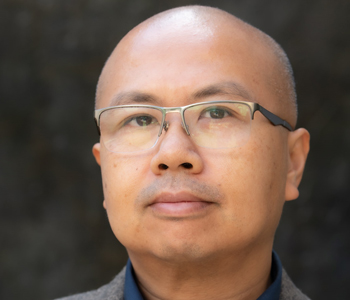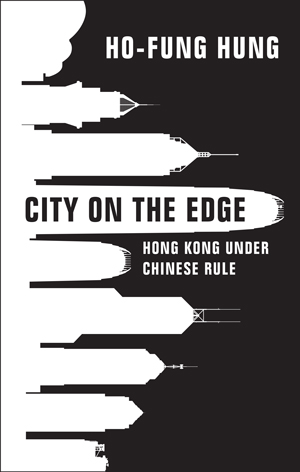
The world suddenly paid a lot of attention to Hong Kong during the uprising in 2019 and the subsequent crackdown in 2020 and after. My book offers a long historical view as well as the political-economic background needed to understand the recent upheaval.
Hong Kong has always been at the interstice between a maritime world and the continental land power China. In the book, I explain that Hong Kong sits at the fault line between two tectonic plates. Geologically, such areas are usually rife with earthquakes and volcano eruptions. But they are also very fertile areas. The 1197 fishers uprising in the Hong Kong area against the Song Empire, tenant resistance against landed gentry in precolonial Hong Kong, the rise of social and democratic movements in post-WWII Hong Kong, and the waves of protest movements in Hong Kong seeking autonomy and democracy after the sovereignty handover in 1997 through the 2019 uprising were all conflicts linked to this fault line. One needs to look at the underlying geological forces in such long time frames to study these upheavals, like earthquakes.
The conflicts in post-handover Hong Kong in particular stemmed from the contradiction between Beijing’s financial need for Hong Kong and Beijing’s urge to establish full political control of Hong Kong. On the one hand, the Chinese Communist Party tightly controls China’s financial system and keeps it insulated from the global economy. But Chinese citizens and companies also need access to the global financial market. The solution is to maintain Hong Kong’s role as an offshore financial center of China with an internationally recognized autonomous legal system, free flow of information, a separate currency, and a government policy-making process autonomous from Beijing. This confers on Hong Kong the social and political freedoms that other Chinese cities could not enjoy. Such freedoms also make Beijing feel insecure.
Beijing always fears a color revolution in Hong Kong that would take control of the city and could spread to mainland China. Hence Beijing constantly attempts to expand its direct control of Hong Kong. The resulting conflicts led to massive protests in 2003, 2010, 2012, 2014, and 2019. Beijing handled the conflicts with meaningful compromises before 2019, but responded to the 2019 uprising with a National Security Law that risked destroying Hong Kong’s role as China’s offshore financial center once and for all. After the crackdown, Hong Kong’s civil society and opposition parties have been thoroughly crushed. However, the tension that gave rise to the protests is still there. The crackdown is not the end of Hong Kong. Resistance has turned underground and overseas. In the short run, Hong Kong will remain dead quiet under the watchful eyes of a newly instituted national security apparatus. But in the long run, when cracks and cleavages in the regime inevitably resurface in the future, Hong Kong could flare up in protest and conflict again.
Hong Kong has been my hometown, where I grew up before leaving for the United States. My area of research has been the political economy of global capitalism, Chinese development, protest, and politics in China. I have been trained in the social scientific tradition that emphasizes how long-term, large-scale historical structures shape local events. I have been observing the political and economic development of Hong Kong closely and occasionally commenting on them in the media. But I have been reluctant to write about Hong Kong academically. It is a challenging task, as a social scientific analysis of Hong Kong–and any place–requires the analyst to maintain critical distance from the object. Hong Kong felt too close to my heart. But with the protest and crackdown unfolding in 2019/20, I decided to take on the task to write about Hong Kong by employing the materials I have accumulated and the macro-historical perspective I have been trained in. I also flew back to Hong Kong in the middle of the 2019 protest to conduct the last round of library research for the book. Such a book is important, as dramatic events like protests often drive scholarly and popular attention to Hong Kong, and not many writings about the deep and long-term roots of today’s turmoil are available. I feel I have the responsibility to write this book to fill the gap.
The book diagnoses the many structural and historical conditions that both restrained and enabled the aspirations, demands, and actions of protesters, opposition parties, and the government in Hong Kong. It also detailes the politics and interactions among many grassroots and elite actors that translate the structural conditions of Hong Kong into political events with long-lasting impacts. Despite my intimate relation with the city, I deliver a cool-headed, clear-eyed, and engaging analysis of Hong Kong.
I hope any browsing reader will spend time with the many figures showing Hong Kong’s financial centrality in the Chinese economy that can be found in the chapter about Hong Kong’s role as China’s offshore financial center. It has been a very common conception that given China’s continuous economic growth, Hong Kong is no longer useful to China economically as a provider of investment and economic know-how. This conception leads many to believe Beijing’s crackdown on Hong Kong is an easy decision and that Hong Kong’s freedom and autonomy are over, as Beijing has no reason to reverse its tightening control of Hong Kong. This is actually what Beijing wants Hong Kong people and the world to believe, but it is far from reality.
The financial data that I show graphically in the book illustrate clearly that until today, Hong Kong is still the irreplaceable gateway through which global investment goes into China and Chinese investment flows out to the world. The Chinese Communist Party still sees its control of the banks and China’s financial sector as one key pillar of its control of the economy and society. As such, it cannot let go of the insulation of the Chinese economy from global finance. It cannot let foreign banks directly do business in China. It cannot let its people and companies freely move money in and out of China. With this control in place, wealthy Chinese people and companies have to continue to get access to foreign financial services and channel their money to the outside world through the Hong Kong financial system.
Hong Kong’s financial centrality to China’s economic system would not change unless the Communist Party of China suddenly lets go of its control of the economy with a meaningful financial liberalization reform. Beijing has been talking of such reform for decades, but it has never happened, and it will not happen easily so long as the Communist Party is still in power. Therefore, Beijing’s crackdown on Hong Kong carries the great risk of damaging the viability of Hong Kong’s financial market, which depends a lot on the trust of foreign governments and companies in Hong Kong’s autonomy from China, the rule of law, and free flow of information. The dilemma between the imperative of maintaining Hong Kong’s financial centrality and the imperative of tightening direct control of Hong Kong is still very true in Beijing. Therefore, the social and political peace and order restored through the crackdown on the protests under the National Security Law is not stable. A new equilibrium has not been attained yet. We will continue to see cleavages among different ruling elite factions in Hong Kong, as well as the back and forth of attempts by Beijing to further tighten control over Hong Kong.
International attention to Hong Kong comes and goes with the coming and going of spectacular protest scenes in Hong Kong. I hope the book can let readers realize the struggle for freedom and autonomy in Hong Kong–and the story of Hong Kong at large–has not ended, given the persistence of the dire contradictions that Beijing faces regarding Hong Kong.


Ho-fung Hung is the Henry M. and Elizabeth P. Wiesenfeld Professor in Political Economy in the Department of Sociology and the Nitze School of Advanced International Studies at the Johns Hopkins University. He is the author of Protest with Chinese Characteristics (Columbia 2011), The China Boom: Why China Will not Rule the World (Columbia 2015), City on the Edge: Hong Kong under Chinese Rule (Cambridge 2022), and Clash of Empires: From “Chimerica” to the “New Cold War” (Cambridge 2022). His analyses and publications have been cited and featured in major media outlets around the world and translated into at least 10 different languages.